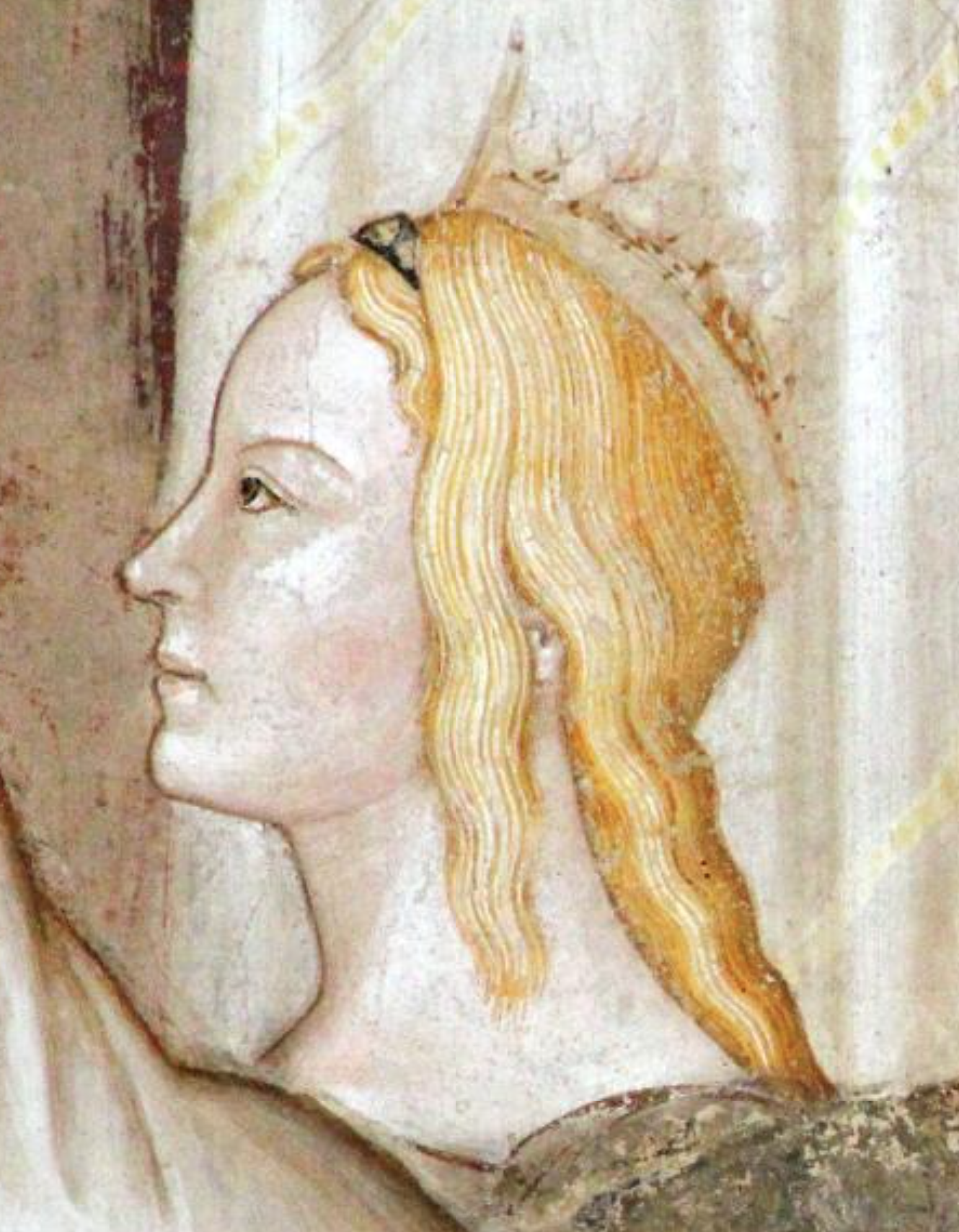Francesco Petrarca Avignon April 6th 1327 - 1330 en 1337 - 1340
Laura de Noves Avignon 1310 - 1348
Simone Martini Avignon 1339 - 1344

Laura de Noves
Born 6 years after Petrarch in 1310 in Avignon she was the daughter of Audibert de Noves (a Knight) and wife to Hugues II de Sade (and possibly the ancestor of the infamous Marquis de Sade). She married at the age of 15 (January 16th, 1325) and Petrarch saw her for the first time two years later on April 6th (Good Friday) in 1327 at Easter mass in the church of Sainte-Claire d'Avignon. Falling in love at first sight, Petrarch would be haunted by her beauty for the rest of his life. Already being married she would turn down all advances he made toward her.
Since this first encounter with Laura, Petrarch spent the next three years in Avignon singing his romantic love and stalking Laura in church and on her walks. After this Petrarch left Avignon and went to Lombez where he held a canonry gifted by Pope Benedict XII. In 1337, he returned to Avignon and bought a small estate at Vaucluse to be near his dear Laura. Here, for the next three years, he wrote numerous sonnets in her praise.Petrarch's Canzoniere (Songbook) is the lyrics to her in the troubadour tradition of courtly love. They advanced the growth of Italian as a literary language. They also popularized this form of sonnet that is called Petrarchan sonnet. Years after her death Petrarch wrote his Trionfi, which is a religious allegory in which Laura is idealized She died at the age of 38 on April 6th, Good Friday, exactly 21 years to the very hour that Petrarch first saw her (as Petrarch noted in his copy of a work by Virgil).
"LAURA, illustrated by her virtues and well-celebrated in my verse, appeared to me for the first time during my youth in 1327, on April 6, in the Church of Saint Claire in Avignon, in the first hour of the day; and in the same city, in the same month, on the same sixth day at the same first hour in the year of 1348, the light itself lost its sparkling beauty, at which time I was in Verona, unaware, alas, of my misfortune. The so beautiful and so chaste body of LAURA was buried in the convent of the "freres mineurs" the same day in the evening.”
Her possible tomb could have been discovered by the French poet Maurice Scève in 1533.
LAURA bij artists of later date

 Foundation Musick's Monument
Foundation Musick's Monument